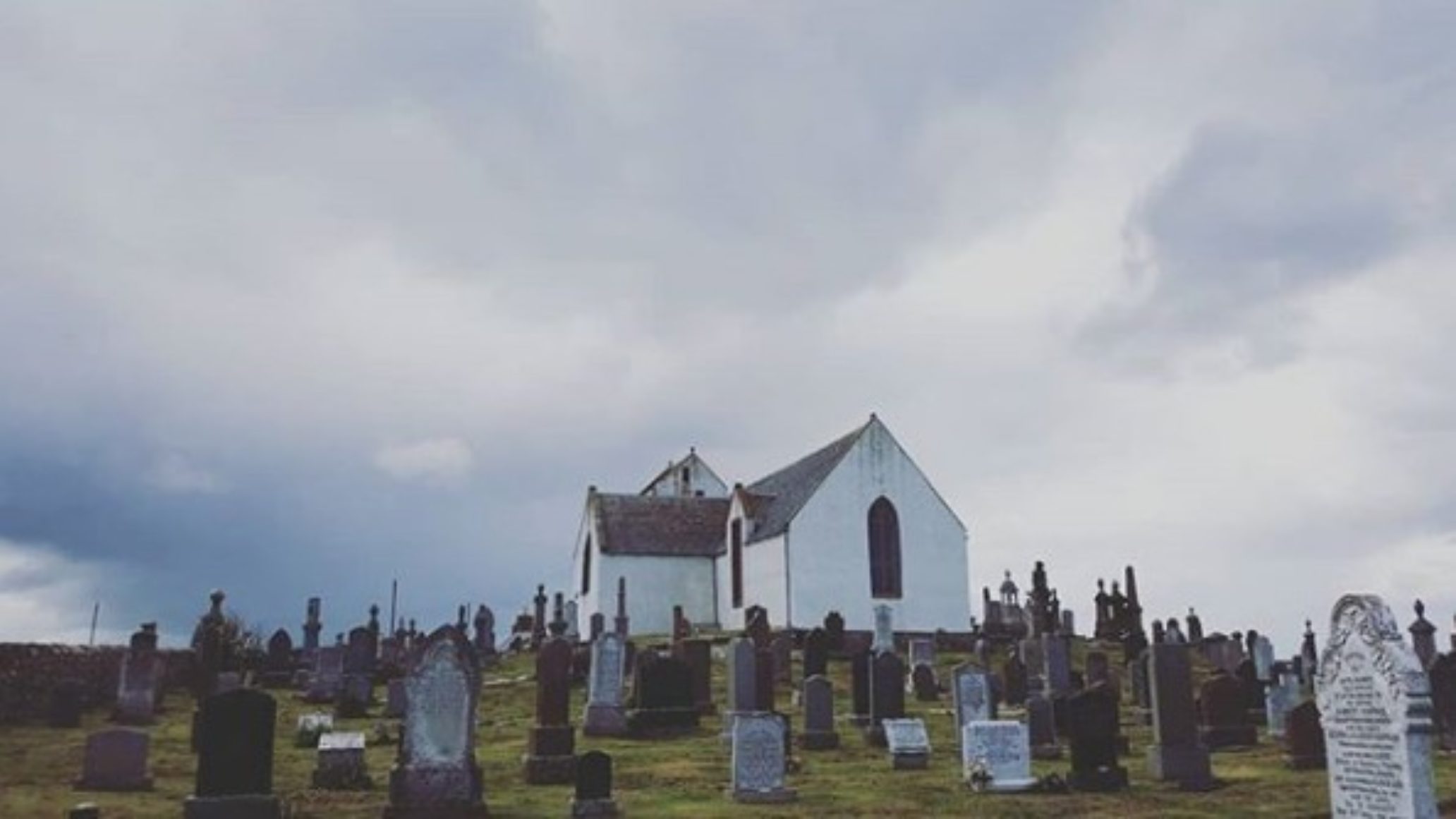The Broch Under the Church!
Travelling along the NC500? Then perhaps you'll have seen the attractive white-harled walls of the Canisbay Parish Church.
Just a few miles west of John O'Groats, the building you see probably dates to around the 15th century, but it's likely there was a building there from around 1223 - 1245. In fact the church was originally dedicated to St Drostan and that a circular rock immediately offshore retains name 'Papel' might suggest a pre-Norse, Celtic origin.
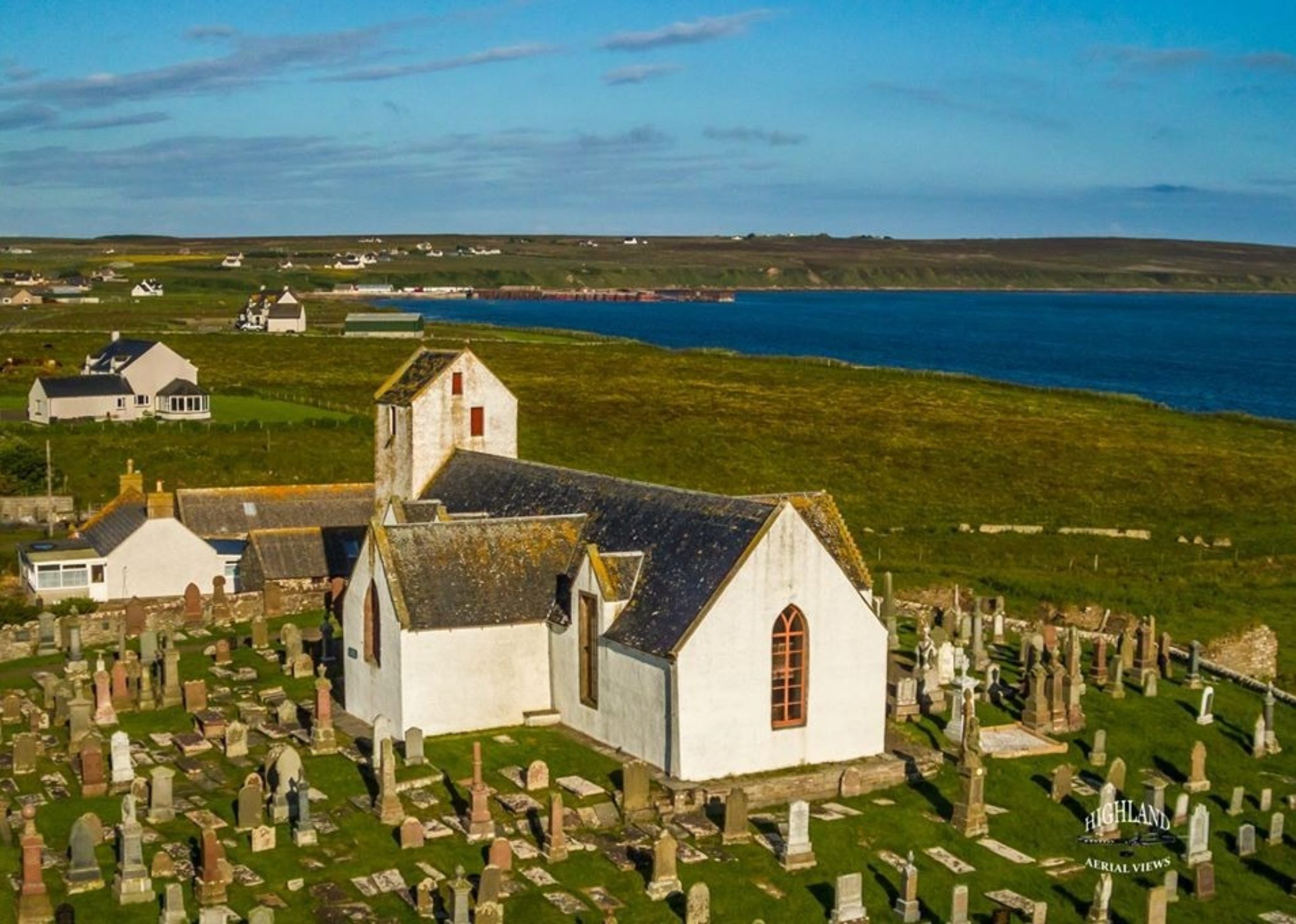
Image courtesy of Highland Aerial Views
But this area has a past which stretches back even further - the original church may have been built on top of a BROCH!
A hammerstone and some fragments of red deer antler were found in the churchyard and presented to the National Museum in 1871 by the Reverend James MacPherson. Later, in 1890, the noted archaeologist Joseph Anderson visited the church with the Reverend:
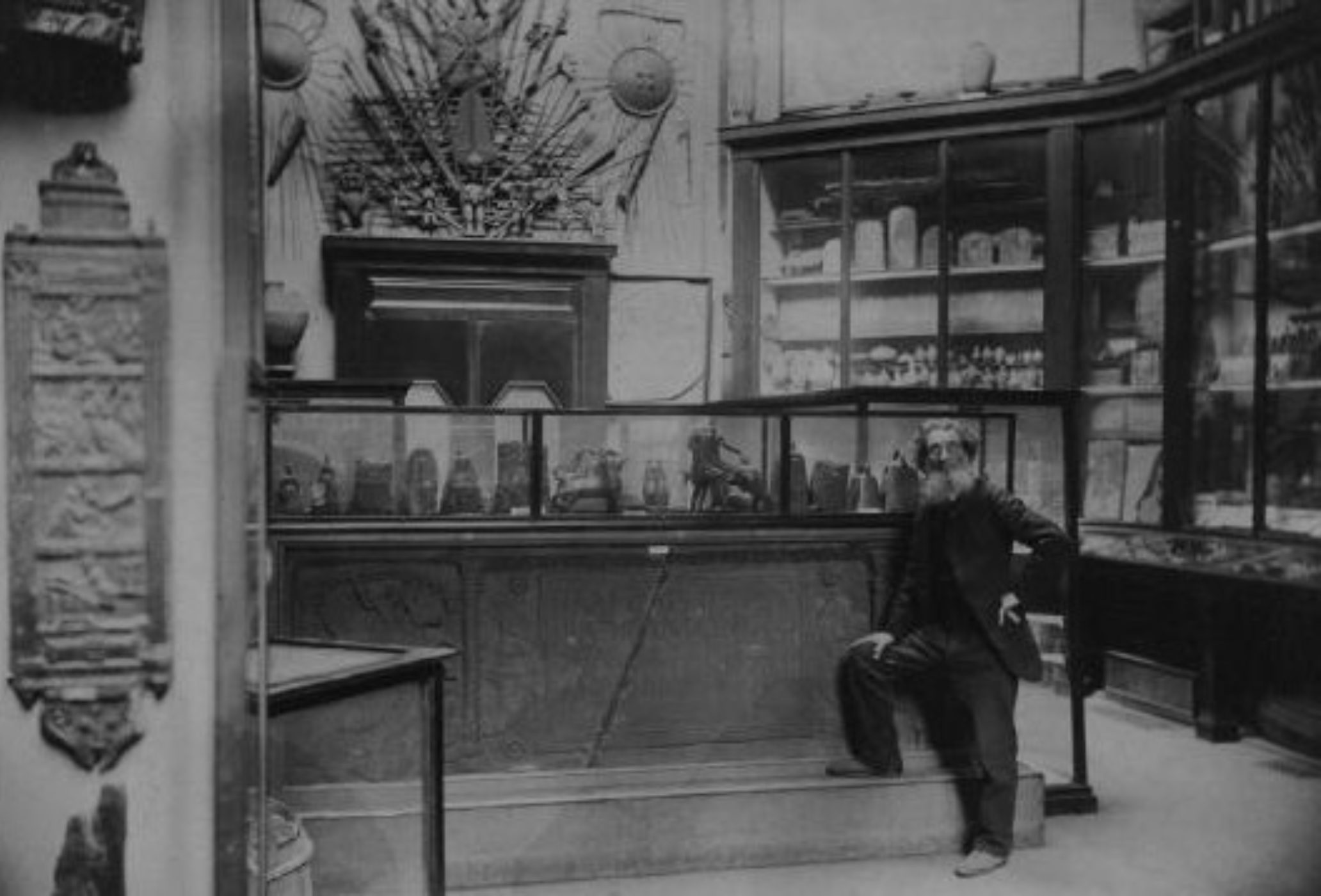
Joseph Anderson pictured in 1890 - image from Joseph Anderson 150
"Having long suspected that the church of Canisbay … was built on a green mound covering the ruins of a broch, I visited the churchyard in company with the Rev. Mr Macpherson, minister of the parish, and found that one side of the mound on which the church is built showed unequivocal traces of the refuse-heap usually attached to a broch."
Anderson goes on to describe what had been found in the area:
"Mingled with the human remains of recently opened graves was a large proportion of more ancient remains of a totally different character, consisting of the bones of the ox, the sheep, deer, horse, swine, and seal, the bones of birds and fish, and the shells of common shore shell-fish–principally buckies and limpets. The long bones of the animals were broken and split, and often half charred ; the deer horns cut, sawn, and sometimes split. Pestles or pounding stones occurred here and there.
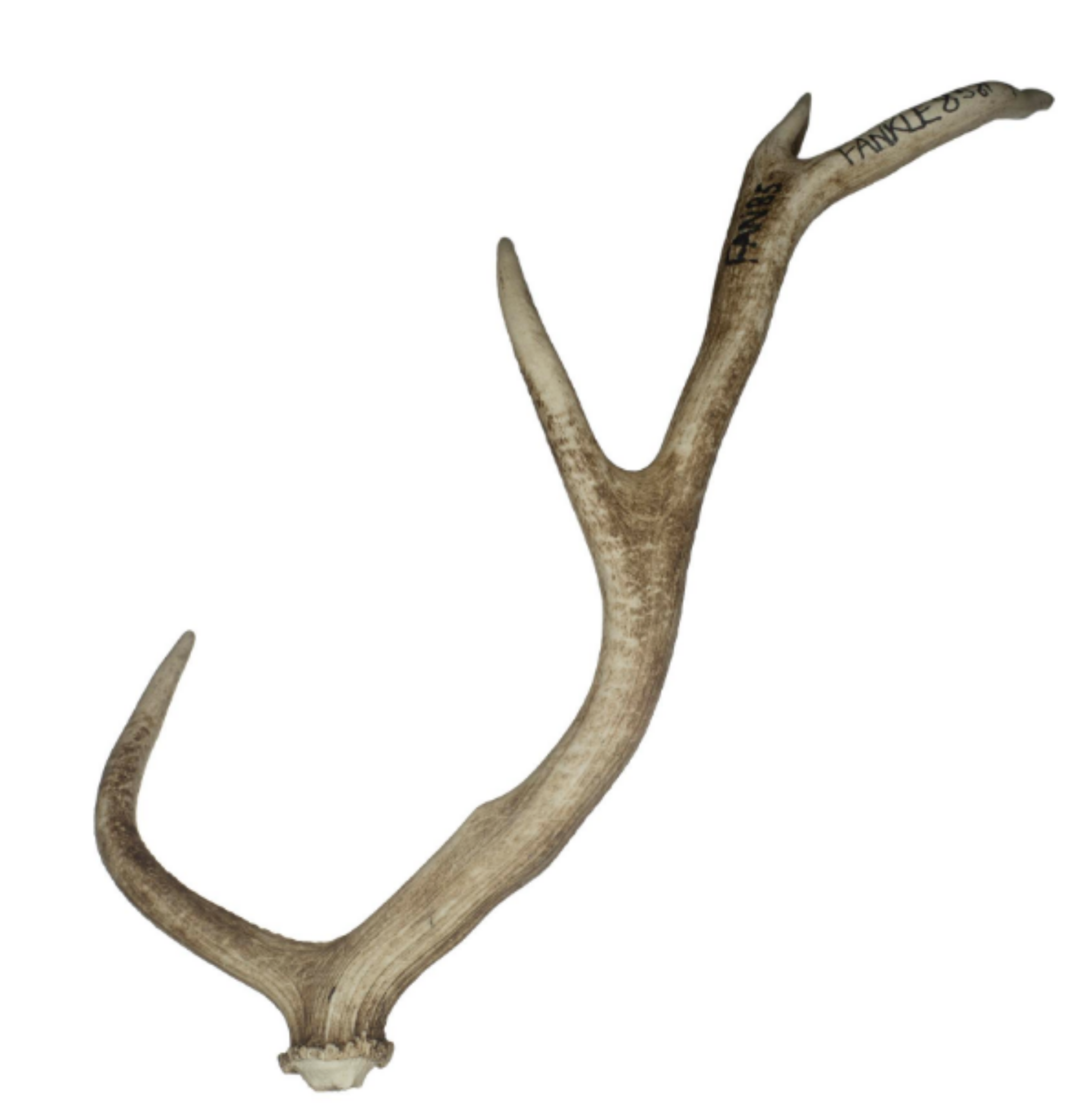
Antler - image from National Museum Scotland
Not shying away from the subject, Anderson spoke with the grave-digger!
"on questioning the grave-digger, we also learned that he had been in the habit of exposing dry-built walling, and at certain places of digging up ashes, deer horns, shells, bones of what he called whales, and which probably were so, and occasionally quern stones. A very good specimen of a pot quern, which he unearthed subsequently to my visit, is now preserved at the manse."
Perhaps, fittingly, Canisbay Chuch is also the resting place of one of the 'original' Caithness Broch Hunters, John Nicolson.
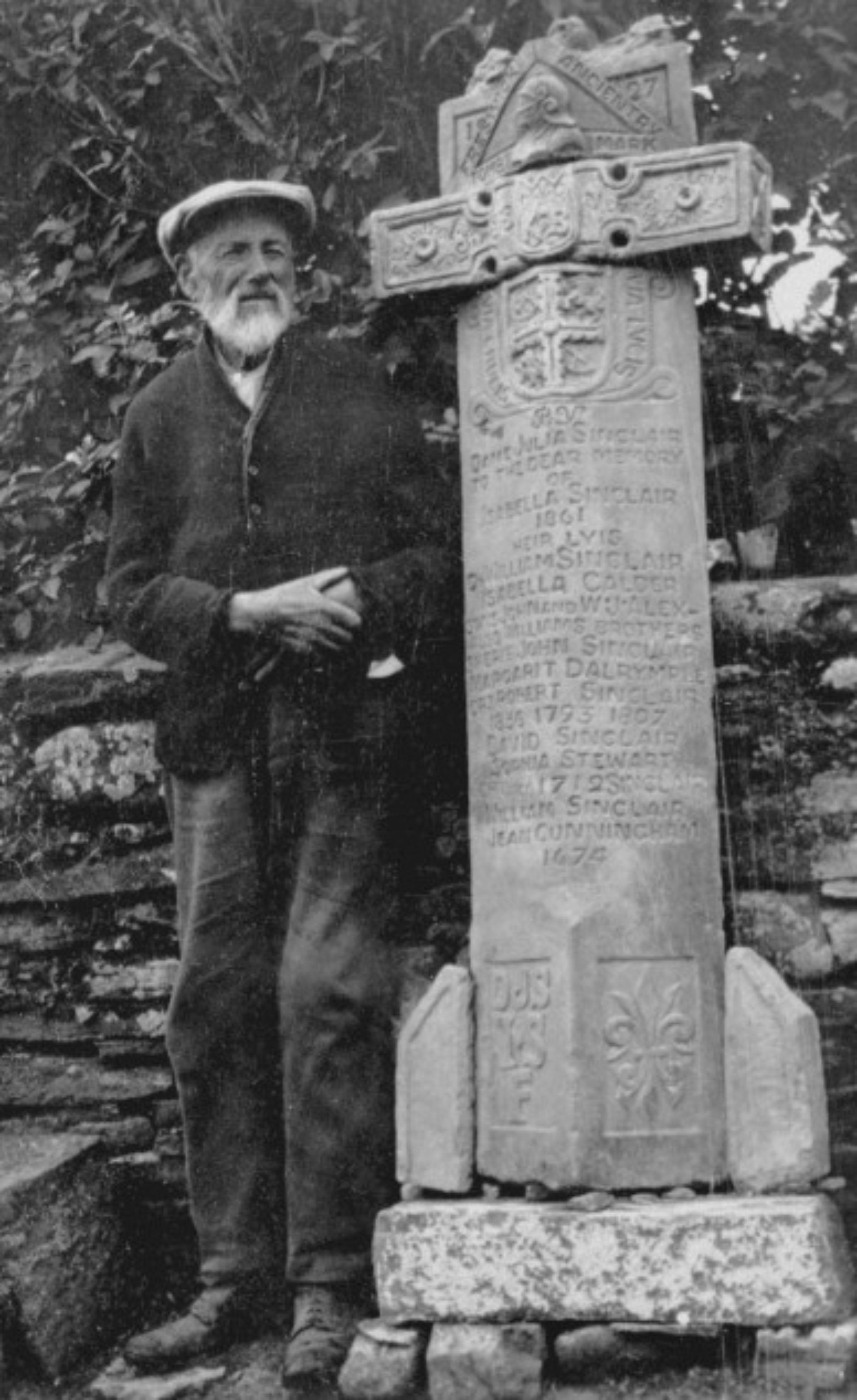
John Nicolson and an example of his carved stone - image courtesy of CANMORE
John was a farmer notable for working alongside Francis Tress Barry in many broch excavations, and for producing several beautiful watercolours and sketches of these investigations. These are particularly important as they are visual evidence of the archaeological work carried out, an important part of archaeology today.
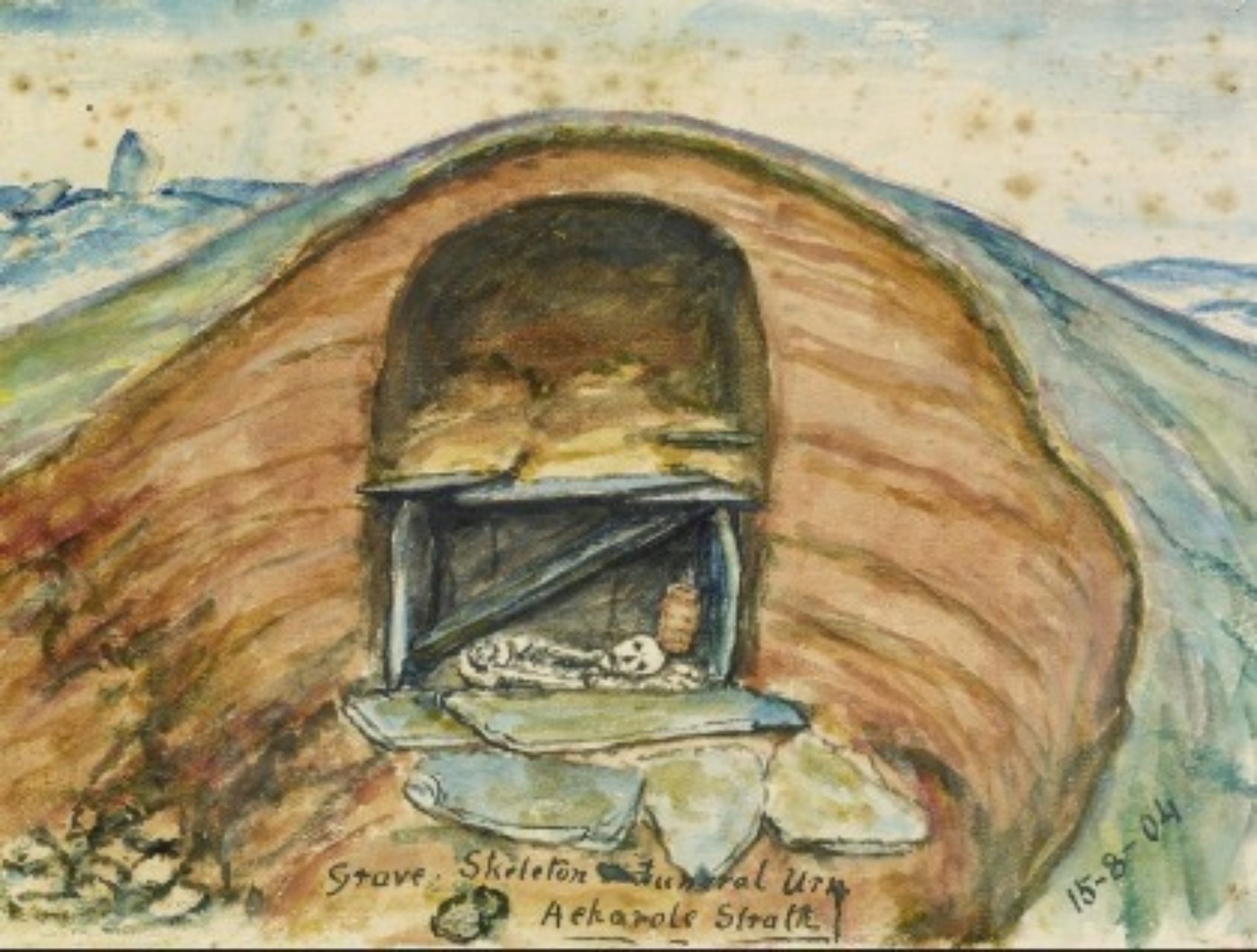
John Nicolson's watercolour of a cairn at Acharole - image courtesy of CANMORE
Additionally, Nicolson enjoyed carving and several examples of his work can be found in Canisbay Churchyard, as well as on Mervyn's Tower, the folly built close to Nybster Broch, and many other places throughout the county. One of his most famous works is the memorial to J.T. Calder, the eminent historian of Caithness.
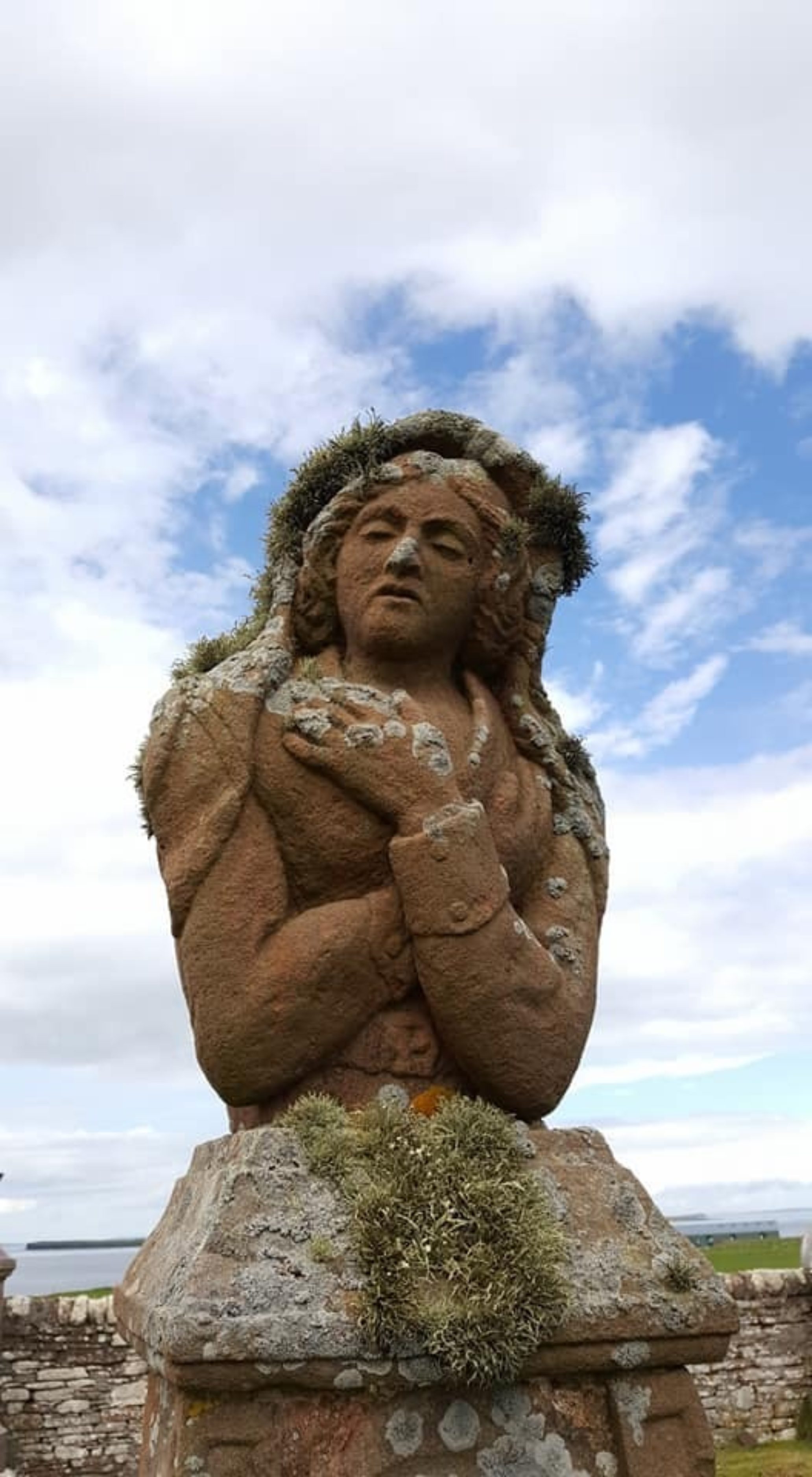
Carving by John Nicolson in Canisbay Churchyard
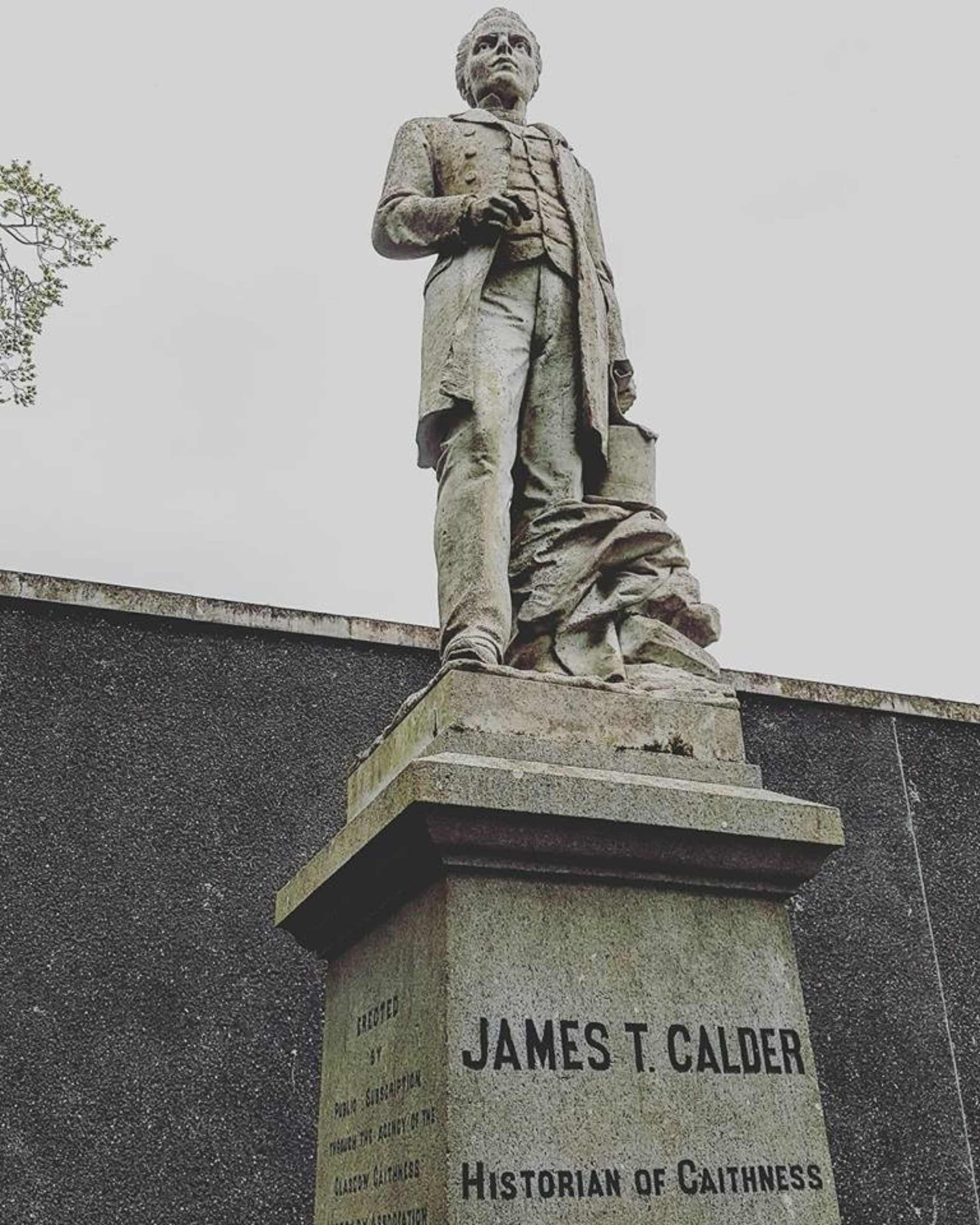
Monument to J.T. Calder, Wick Riverside
Will we ever get to the bottom of this mysterious possible broch? Archaeological investigation can be quite difficult when you're dealing with a sensitive area such as a burial ground.
Of course similar excavations have taken place at ecclesiastical sites throughout Scotland - however, the issue here being that the broch, if anywhere, would be directly below the church and/or churchyard.
Perhaps we should just enjoy the beautiful white-harled walls of Canisbay Church and the quaint carvings of John Nicolson - remarkable testaments to our county's incredible heritage!
